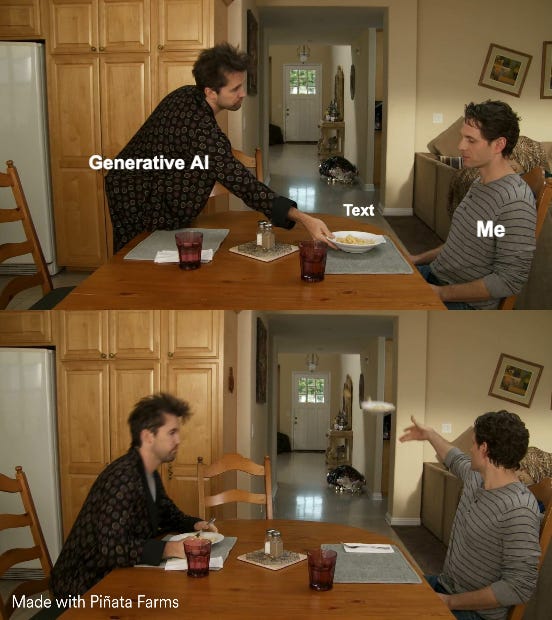How I'm Using Generative AI
Good enough to criticize
We often imagine that generative AI is like a replicator in Star Trek: tell it what you want, and it’ll just automatically create it.
Recently I’ve been working on a set of exercises and reflections to go with my new courses on rest (and how to create more of it), distraction (and how to have less of it), and the 4-day week. Generative AI has proved to be useful as an assistant in this process— but not because it’s creating material instead of me.
To write a good exercise, you have to think closely about what you want readers to achieve; the steps they need to go through, the instructions they have to follow, and how to order your exercises so they build on each other in a logical way, like episodes in a season of a show.
So it’s combination of detail and big picture and narrative structure and imagining all this from the user’s perspective.
I find writing these things a big challenge, but a very valuable exercise— there are few things that force me to clarify my thinking so effectively than figuring out how to make an idea useful to other people.
So how does AI help? Here’s my process.
First, I’ll take some notes and prompts, feed them to a generative AI, and ask it to come up with some exercises and reflections. It dutifully produces something for me.
Then, I look over what the AI has produced.
Finally, I throw it out, and start over.
Sounds dumb, right?
But having something to react to, rather than facing the blank page or my own inchoate scribbles, accelerates my thinking and reasoning about the project. If I can look at something that an AI has written and say, “This part is good, but this won’t work,” I’m now thinking about why the second part fails— and this means I can see how to write something better.
Or, I might take a metaphor or type of exercise— say, “create a profile of the ideal worker in your profession”— and keep the exercise but completely rewrite the instructions.
Maybe 2-5% of time, there’s something that’s good enough to basically drop into the exercise, but it’s usually an edit of something I gave it.
Alan Kay famously describe the Apple Macintosh as “good enough to criticize.” Kay didn’t mean that as a put-down; rather, it meant that the Mac was a product that you could actually build and improve on.
In a similar vein, the results I get from generative AI are rarely good enough to put in front of clients; but I can use it to produce the stuff that I will put in front of clients. In other words, it’s good enough to criticize— and to spark my own thinking.





